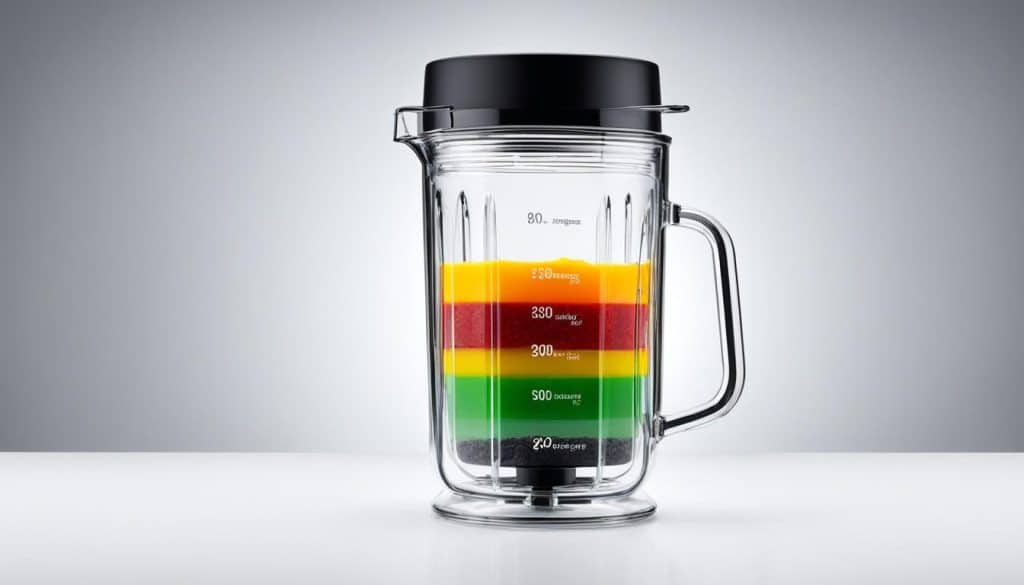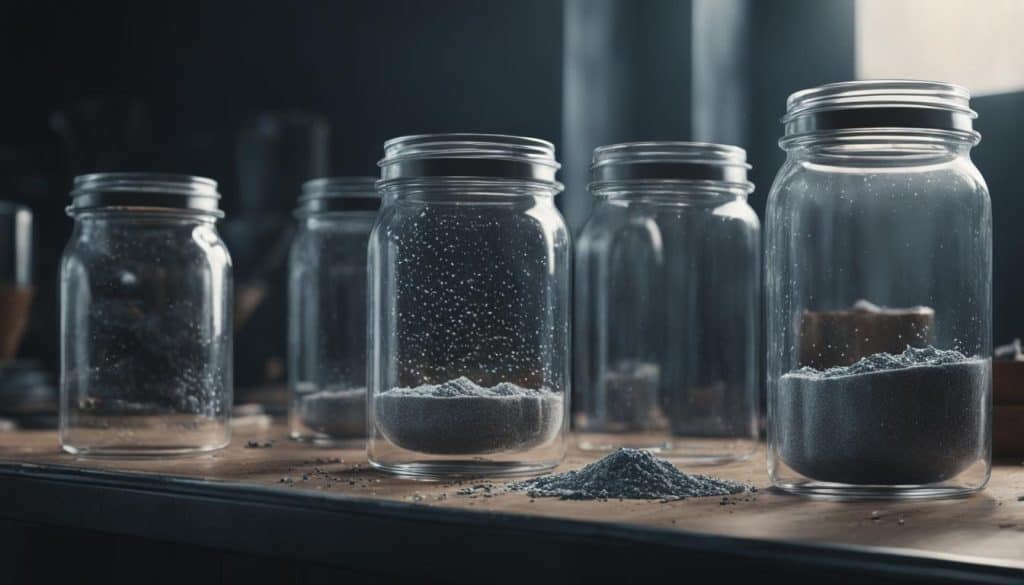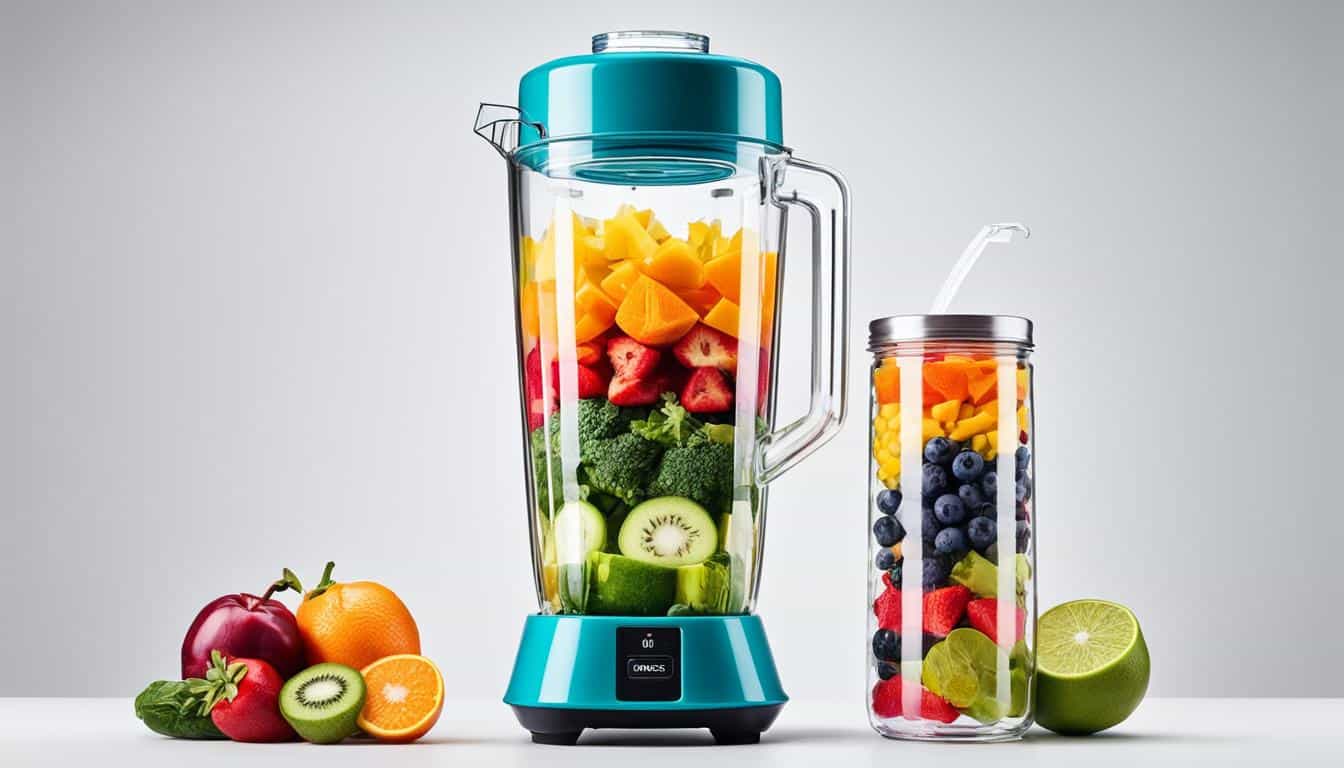When it comes to Glass vs. Plastic Blender Jars, it’s like choosing between chocolate and vanilla ice cream – both have their perks! I remember when I first got my blender; I stood in the store, scratching my head, wondering whether to pick the shiny glass jar or the lightweight plastic one. It’s a kitchen dilemma many of us face!
Glass jars are like the superheroes of the blender world. They’re tough, don’t hold onto smells like last week’s onion soup, and they’re pretty good at handling hot stuff. But, just like superheroes, they have a weakness – they can break if you drop them (and I’ve had my share of ‘oops’ moments!).
On the other hand, plastic jars are like the trusty sidekick. They won’t shatter if they take a tumble, and they’re lighter than a feather (well, not really, but they’re super light!). However, they can get scratched and sometimes hold onto flavors, making your strawberry smoothie taste faintly like yesterday’s pesto.
So, what’s the best choice? It’s like picking a team in dodgeball. If you’re after something durable, heat-friendly, and crystal clear, team Glass is your go-to.
But if you want something light, unbreakable, and wallet-friendly, then team Plastic might be your champion. Remember, both teams play the game well; it just depends on what you need for your kitchen adventures!
Glass Blender Jars
When it comes to blender jars, glass is a popular choice, and for good reason. Glass blender jars are known for their durability, scratch-resistance, heat-resistance, ease of cleaning, and aesthetic appeal. They are perfect for those who want a product that will last!
Pros of Glass Blender Jars
One of the biggest benefits of glass blender jars is their durability. Glass is less prone to scratches, which means that it will look great for longer.
- Glass is heat-resistant, which makes it perfect for blending hot liquids or soups.
- Glass is also non-absorbent, which means that it is less likely to hold onto flavors and odors from your ingredients. And, cleaning glass blender jars is easy – simply rinse them out and let them air dry.
- Glass blender jars are known for their durability and long-lasting nature. They are less likely to scratch, chip or crack, making them an excellent investment in the long run. They also don’t absorb stains or odors, ensuring that your blender remains fresh and odor-free always.
- Glass blender jars are scratch-resistant, making them ideal for blending hard ingredients like ice and nuts. Unlike plastic jars, which can get scratched easily, glass jars retain their clarity, ensuring that you have a clear view of the blending process.
- Glass blender jars are easy to clean. They don’t retain odors or stains, and you can easily rinse them with soap and water or put them in the dishwasher.
- Glass blender jars also have an aesthetic appeal that many find compelling. Glass gives a sense of high quality and can make monitoring your blending t ough the jar much easier.
Cons of Glass Blender Jars
A glass blender jar may sound like a great idea, but it’s not without its drawbacks. Here are some of the cons to consider before investing in a glass blender jar:
| Drawback | Description |
|---|---|
| Heavy | A glass blender jar can be quite heavy, especially when filled with ingredients. This can make it difficult to handle, and may not be a good option for those with weaker grips. |
| Prone to breakage | Glass blender jars are not as durable as their plastic counterparts and are more prone to breakage. The delicate nature of the jar can be a big disadvantage if you’re clumsy or tend to bang things around in the kitchen. |
| Expensive | Compared to plastic blender jars, glass blender jars can be more expensive. This may not be the best option if you’re on a budget and looking for a more affordable solution. |
| Not dishwasher-safe | Cleaning a glass blender jar can be a bit of a hassle, and it’s not dishwasher safe. If you don’t enjoy hand-washing dishes, this may not be the best option for you. |
These issues can be compounded by the cost of glass blender jars, which may be higher than plastic alternatives. And, if you use a glass blender jar, you must be sure to clean it by hand as they are not dishwasher safe.

Plastic Blender Jars
In contrast to glass blender jars, plastic blender jars are renowned for their lightweight nature, making them incredibly portable.
Not only is their weight an advantage, but they are also affordable, providing a budget-friendly option for those seeking a blender that won’t break the bank. Available in various sizes and shapes, it’s easy to find a plastic blender jar that can cater to your unique blending needs.
Despite their advantages, there are some cons to using plastic blender jars. They are susceptible to scratches and cloudiness, making them less durable than their glass counterparts.
This can result in a cloudier appearance that may affect the aesthetic appeal of your blender. Additionally, they are not recommended for hot liquids, as they may melt or warp when exposed to high temperatures, and are trickier to clean when compared to glass.
If you’re looking for a blender that is relatively quiet when in use, then a plastic blender jar is your best option. They tend to generate less noise compared to glass blender jars.
You may also appreciate knowing that plastic blender jars are dishwasher safe, so you won’t have to worry about handwashing your blender jar after every use.

Pros of Plastic Blender Jars
If you’re looking for a lightweight blender jar that won’t break your budget, plastic is an ideal option. Not only are plastic blender jars generally more affordable than their glass counterparts, but they’re also much lighter, making them easier to handle and store.
Plastic blender jars come in a wide variety of sizes and shapes, allowing you to select the perfect option for your blending needs.
Another advantage of plastic blender jars is that they tend to be quieter during use than glass jars, avoiding intrusive noise levels. This feature is particularly useful during early mornings, weekends and evenings when you don’t want to disturb others in your home or your neighbours.
Finally, plastic blender jars are conveniently dishwasher-safe, allowing you to clean them easily between uses without worrying about damage or loss of their original look. Their easy maintenace helps save your valuable time and reduce stress.

Plastic blender jars – Lightweight, Affordable, Wide Variety, Quiet, Dishwasher-safe
Cons of Plastic Blender Jars
Despite their affordability and versatility, plastic blender jars have several downsides that could affect your blending experience. It’s important to consider these factors before choosing a plastic blender jar.
Proneness to Scratches and Stains
Plastic blender jars are prone to scratches and can quickly become cloudy and unattractive over time. Scratches on the surface can also trap food particles, making cleaning more difficult.
To showcase the durability of plastic blender jars, manufacturers often chemically treat their products to make them scratch-resistant. However, these treatments can wear off over time, and plastic jars are still more prone to damage than glass counterparts.
Absorption of Odors and Stains
Plastic blender jars are notorious for absorbing odors and stains that affect the taste and smell of food. This may be particularly concerning if you regularly blend pungent or highly pigmented ingredients, such as garlic, beets, or turmeric.
The absorption of odors and stains can also create an unsanitary environment for your blending needs and may require extra effort to clean the jar thoroughly.
Not Ideal for Hot Liquids
Plastic blender jars are not ideal for blending hot liquids, as they can distort or warp under high temperatures. This can also release potentially harmful chemical compounds into your food, posing a health risk.
Although some manufacturers offer plastic blender jars explicitly designed for hot liquids, they may not guarantee optimal results. In contrast, glass blender jars are heat-resistant and can safely blend hot soups, sauces, and beverages.
Difficult to Clean
Plastic blender jars are generally more challenging to clean than glass jars, as they require more time and effort to eliminate any leftover residue. Scratches and stains on the surface can also trap food particles, making cleaning more difficult and time-consuming.
You can alleviate these issues by regularly cleaning the jar and ensuring it is dried thoroughly after use. However, it’s worth noting that glass blender jars are more non-porous than plastic, making them less susceptible to food build-up and cleaner overall.
Ultimately, the pros and cons of plastic blender jars depend on your unique needs and preferences. While plastic blender jars may be more affordable and convenient in some cases, they may not be the best choice if you’re looking for a durable, long-lasting, and easy-to-clean option.

Factors to Consider
Choosing between a glass and plastic blender jar can be overwhelming. Here are the key factors to consider:
- Frequency of use: If you use your blender frequently, a glass jar is more durable and scratch-resistant. However, if you only use it occasionally, a plastic jar might be more suitable.
- Types of ingredients regularly blended: Glass blender jars are better suited for blending hot liquids, while plastic blender jars are ideal for ice-crushing. Take into account the types of ingredients you regularly blend before making your selection.
- Budget constraints: If you’re on a tight budget, plastic blender jars are generally more affordable than glass ones.
- Safety concerns: Families with young children might want to consider using a plastic blender jar, as it is less prone to breakage.
- Personal preferences: Consider aesthetics, weight, and ease of handling when making your decision.
Keep in mind that there is no “right” or “wrong” choice when it comes to selecting a blender jar material. The factors above should serve as a guide to help you make an informed decision based on your specific needs and preferences.
Frequency of Use
When choosing a blender jar, it’s crucial to consider how frequently you’ll be using your blender. If you plan on using your blender heavily, you may want to opt for a glass jar due to its durability and resistance to wear and tear.
Glass jars are less likely to scratch or cloud over time and can withstand the demands of heavy blending. Plus, glass jars typically last longer than their plastic counterparts, making them a smart investment for frequent blender users.
On the other hand, if you only plan to use your blender occasionally, a plastic jar may be a more budget-friendly choice.
Types of Ingredients
The types of ingredients you plan to blend often play a significant role in determining the ideal blender jar material for your needs. While both plastic and glass jars can handle most ingredients, certain types may require one over the other.
If you frequently blend hot soups, for example, glass jars are a better choice due to their heat-resistant properties. Glass jars can withstand high temperatures without releasing any toxins or harmful substances into your food.
On the other hand, plastic jars may be advantageous for ice-crushing. Plastic jars tend to be lighter, making them easier to handle during extended blending sessions. Additionally, plastic jars are less likely to crack or shatter when encountering solid ice cubes, as opposed to their glass counterparts.
Overall, it’s important to consider the types of ingredients you blend regularly to select the best blender jar material for your needs.
Budget and Safety Considerations
When it comes to choosing between glass and plastic blender jars, budget and safety may heavily influence your decision. Generally, plastic jars are more affordable than glass, making them an excellent choice if you’re on a tight budget.
In terms of safety, families with young children may prefer plastic blender jars due to their reduced breakage risks. Plastic jars are less likely to shatter if accidentally dropped, which is especially important if kids are around.
Some plastic blender jars come with safety features like locking lids that prevent them from accidentally spilling or opening.
However, it’s worth noting that plastic jars may not be as long-lasting and durable compared to their glass counterparts.
Plastic blender jars are usually lightweight and easy to handle, which makes them a popular choice for those who prioritize convenience. They are also dishwasher-safe, eliminating the need for handwashing and making cleaning a breeze.
Despite their advantages, plastic blender jars tend to be more prone to scratches and stains, which can eventually affect their clarity and appeal. They may also not be ideal for hot liquids because of their susceptibility to warping or melting.
Personal Preference is Key
Ultimately, when it comes to choosing between glass and plastic blender jars, personal preference plays a significant role. Your decision may depend on factors such as your aesthetic preferences, the weight of the blender jar, and how easy it is to handle.
Aesthetics are a crucial consideration for many individuals when selecting a blender jar. Glass blender jars are often favored for their sleek and sophisticated appearance, while plastic ones are available in a wide variety of colors and designs.
Weight may also be a factor to consider, particularly if you’re planning to move the blender jar around frequently or have limited storage space. Plastic blender jars are usually lighter than their glass counterparts, making them easier to handle.
Finally, ease of handling is an essential consideration. Some individuals may prefer the feel of glass in their hands, while others may find the grip of plastic more suitable. Consider how easy it is to clean and maintain your chosen blender jar, as well as the level of noise it produces during blending.
Ultimately, the decision between a glass and a plastic blender jar comes down to your personal preference. Consider your aesthetic preferences, weight, ease of handling, and other factors to make the right choice for your needs.


